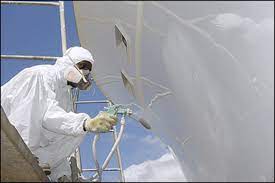Have you ever considered that because they are frequently over water, boats and other types of watercraft are able to last a long time? Take a moment to pause and reconsider. More hazardous bacteria found in both freshwater and saltwater are exposed to them when they are more likely to float or be partially submerged in water. By developing rust on the boat’s exterior, these bacteria, in combination with acid and alkaline, degrade the paint coverings all the way to the foundation of all of the surfaces surrounding your watercraft.
Apart from the natural wear and tear brought on by the aforementioned situation, accidents and other types of mishandling are either brought on by negligence or when a boatman decides to indulge in a little too much alcohol, which results in bumping or colliding with other boats and later realising that holes were made in the floor due to a sharp object that punched the bow or the hull. When the culprit is sober, the reality sets in and sends a message of mixed annoyance and temporary regret. The impact of this ignorance on the integrity of the boat may be more than imagined in terms of the needed expenditures for repairs and refurbishments.
Nevertheless, there always seems to be a remedy to a challenge, and advances in gel coat repair may bring about a sigh of relief. from inconsequential harm, such as mild scratches brought on by sideswiping. The correct knowledge and application of gel coat can be used to address minor issues like high impact collisions with hard and sharp surfaces and restore your watercraft’s once-shiny and shimmering aura.
Here are a few steps to think about in order to have a better and clearer knowledge of professional gel coat repair service for boats:
- Choosing the finish type that you want
Because the various paint coatings that have already been applied are sufficiently thick to reject the desired application, gel coat won’t adhere to a repainted material. Since the substrate texture is unable to absorb the current chemical application with a rough surface predominating by the unfavourable presence of foreign mixtures, the thickness of the prior paint job hinders the application of the gel coat. The best course of action is to completely remove all undesirable elements, partially smooth the surface with a sander, assess the degree of smoothness, and then commence applying the coating of gel methodically.
- Getting the outer layer ready for additional applications
Because the final applications of the gel coat also contain wax elements that may blend up adversely with unmanaged and messy boat surfaces, it is crucial to keep in mind that the surface you want to appear glossy or shiny must be clear from either oil, wax, and other types of wasted lubrication. Always remember to use paint thinner to thoroughly clean the area around the gel coat coatings and acetone to remove any last-minute, undesired leftovers. Chisel areas that resemble the letter V for a far better and stronger bonding surface for fixing much deeper holes and severe scratches.
- Over the portion that needs to be mended, use industrial tape or glue.
This is done to stop undesirable materials, such as additional gel coat residue and sandpaper splinters, from interacting with the surface’s present coatings. With this method, accidental spraying might also be avoided. As always, use the acetone to make sure the surface to be worked on is clean and ready for the subsequent application processes. Coating of filler, blending and matching of the gel coat, mixing of stimulant substances, application of the gel coat, and finally scrubbing, cleaning, and finishing are further procedures in the gel-coated restoration.


